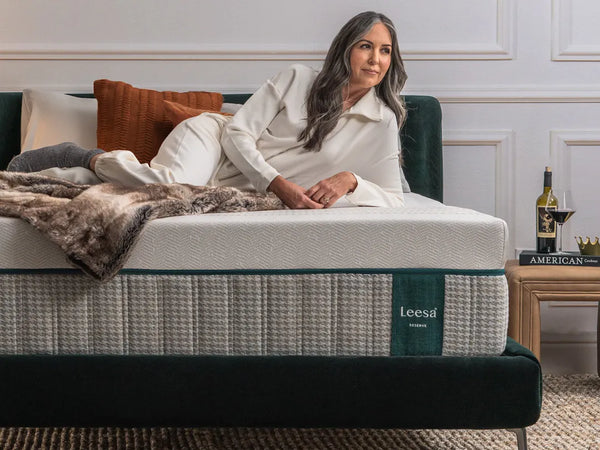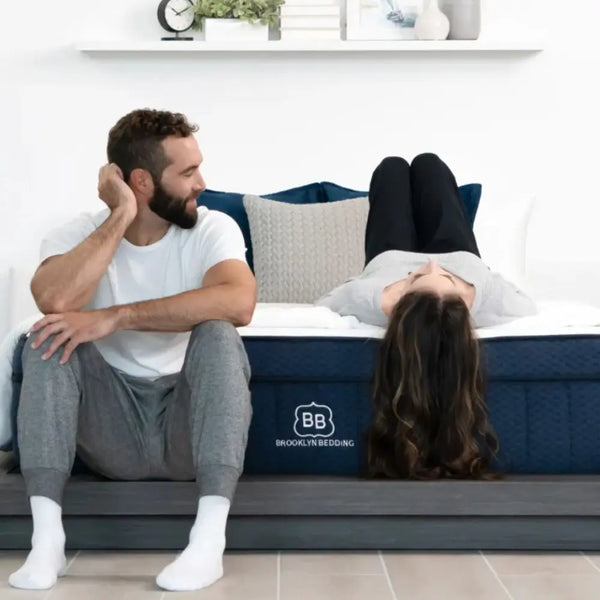Top Reasons You Should Test a Mattress Before You Buy It
Outfitting your bed with a quality mattress is one of the most significant investments you’ll make to improve your sleeping health. Take your time when selecting and testing mattresses before making a final decision.
There is no one-size-fits-all mattress, and your preference will depend on factors like your body, health, and sleep style. However, following some general rules may help narrow your choices down further.
1. Test the Comfort
When it comes to mattress shopping, testing it out is the only surefire way of knowing whether or not a bed will meet your comfort requirements. Therefore, it’s essential that you visit a store and try all of your potential choices out personally.
Consider factors like comfort, firmness and materials when searching for a mattress. Firmness refers to how soft or hard the mattress is; typically this scale ranges from 1- 10. Some mattresses might feel better than others depending on individual weight, sleeping position and other variables.
Before purchasing an online mattress, read reviews and consider its return policy before making your selection. Bed-in-a-box brands know that buying without trying it first can be intimidating; so they provide sleep trial periods and warranties to reduce risk and help make better decisions. In addition, foam bed-in-a-box brands may provide compressed mattresses via mail for less intrusive delivery options; just remember they may take time to expand and conform to your body shape!
2. Test the Support
If a mattress doesn’t provide adequate support, it may cause pressure points and lead to discomfort. When testing support of mattresses, lie down in your preferred sleeping position and pay attention to how it feels; too-firm mattresses might make back sleepers uncomfortably restless while too-soft ones might not provide sufficient cushion for stomach or side sleepers.
As you compare mattresses, take note of their foundations as well. A working box spring flexes to provide long-term comfort; on the other hand, slatted foundations simply add height without providing additional support or cushioning.
As part of your evaluation of mattress quality, consider both coil gauge and coil count when assessing it. A higher coil count means denser mattress density while lower counts tend to offer more softness.
3. Test the Durability
Comfort levels of mattresses may seem subjective to some people, but they’re actually affected by your body structure. If you are overweight, for instance, a firmness level that feels great to someone of average weight may be too soft for you.
Consider also how well your mattress stands the test of time. Over time, mattresses tend to lose their initial integrity, leaving permanent indentations behind. For optimal results, look for mattresses with resilient foundations which reduce indentation or sagging over time.
Check a mattress’s durability by inspecting its coil gauge and coil count; typically a higher number indicates a more durable mattress while lower numbers typically indicate softer models. Look out for certifications such as OEKO-TEX, GREENGUARD and CertiPUR-US that verify they contain no harmful chemicals. Finally, see how well the mattress cancels out movement – whether from your partner shifting around during sleep or you yourself moving during the night; foam beds tend to do this better while innerspring models let this pass – an important consideration when sharing beds!
4. Test the Warranty
Comfort is ultimately the key component in selecting a mattress, even for expensive options. Even the most luxurious mattresses won’t help improve your rest if they are uncomfortable for you – what feels comfortable for other people can vary drastically and is highly subjective.
Comfort in a mattress depends largely on its materials and firmness level, as well as your preferred sleeping position and duration of that position. For best results, try lying down and shifting positions regularly while testing out its comfort.
As part of your mattress buying decision process, it is also essential to test its recovery rate or how quickly it rebounds back. You can do this by adding weight to it and watching how quickly it responds. Memory foam and latex mattresses typically respond faster while innerspring and hybrid options have slower response times. Finally, certifications like OEKO-TEX, GREENGUARD and CertiPUR-US should also be looked for to make sure that it contains no harmful chemicals; usually mattresses with these marks have undergone independent quality and safety tests as well.
5. Test the Return Policy
Mattresses can be one of the costliest pieces of furniture a person owns, making it essential to find one with which you feel most at ease. Many companies provide return policies on their mattresses to make this easier for customers and some even offer warranties to cover them.
When testing a mattress, attempt to simulate your normal sleeping position – this will give an accurate impression of its ability to accommodate your natural form and its edge support when sitting on either side. Additionally, look out for edge support problems; that might give a clue of its quality as a source for support for sitting.
The recovery test, also known as the bounce test, measures how quickly a mattress returns to its original form after weight is lifted off it. This can provide insight into how quickly and comfortably a mattress will adapt to meet the demands of different sleep positions and comfort levels.
A perfect mattress should feel great to you; and the only way to know this for certain is through testing it in-store or at home. While online mattress shopping may provide convenience, physical stores allow for more effective testing of firmness, temperature regulation and spinal alignment than any virtual store can.









